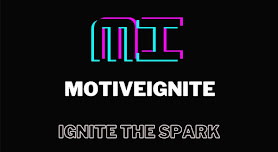Exercise is one of the best things you can do for your body, your mind, and your life. The word exercise is derived from the Latin “exercitatio” meaning, work out or train. But not all exercises are created equally. One of the more recent developments in this field is high-intensity interval training (HIIT), which involves short bursts of high-intensity exercise followed by a brief recovery period.
The benefits of HIIT alone are numerous and well known by many: It can burn fat, increase your health and fitness, build muscle and strength, reduce body fat, and improve performance.
But the added benefit to HIIT is not just physical. In fact, the mental benefits of training intensely including boosting attention span is proving to be one of the most important factors in creating a better life for yourself. When you're constantly being challenged mentally during workouts, you're creating resistance within your mind (or "fight or flight" response) helping to ward off boredom and allowing room for you to unlock your potential for more creative thinking. I've found that this mental challenge should be at least as much of a priority as physical training.
If you're not getting the actual benefits from your personal training program then there's a good chance that you're not doing it correctly or it's just not the right type of exercise for you. How can you tell?
There are multiple sets of body measurements that should be taken during your workout:
1. Heart rate – Record your heart rate every 15 minutes during your workout. This is one of the most useful indicators in terms of knowing whether or not your body is burning fat, aerobically or anaerobically (the energy source your body uses to keep itself alive). I often test my heart rate on a heart rate monitor during and after workouts, and I recommend wearing the same brand if possible. That way you'll be able to have a better understanding of your heart rate recovery time. If there is no heart rate monitor available, then simply take your resting heart rate at a specific time during the day depending on when you are doing the workout.
2. Blood pressure – This can be tested before and after your workout to evaluate how your body’s fluid levels and blood chemistry is affected by exercise. It’s generally suggested that before beginning an exercise program you should receive clearance from your doctor.
3. Body weight and composition – Although hard to accurately measure through body fat scales, body composition is important to control (reducing fat and building muscle). There are several methods for measuring this including underwater weighing, skinfold calipers and bioelectrical impedance (which is a handheld device to measure fat).
4. Training heart rate – This is the most important measurement because it's the only indicator that will tell you whether or not you're exercising at an aerobic level. Aerobic training improves cardiovascular endurance and helps your body burn more calories while resting. The goal of losing weight while building muscle with exercise is to improve your body’s ability to use oxygen during workouts in order to burn fat. This means you should be working out at a heart rate that is 50-70% of your maximum (or 220 minus your age). For example, if you're 30 years old then the best range of target heart rate should be between 70-80% (220 minus 30 = 170). Note that I said "workout" and not "exercise".
5. Training time – You should keep track of how long you can exercise at a certain heart rate for at least six weeks after starting a new workout schedule. This will give you an accurate picture of your maximum or best heart rate. The average person can sustain for about 8-10 minutes depending on the intensity level.
6. Training hilly terrain – The role of conditioning is to help your body adapt to its environment by increasing the size and density of muscle fibers so that it can handle more work. This means that your body is going to try to get stronger by increasing its bone density, muscle mass and endurance.
What this means for your workouts is that you should exercise at a level of intensity that requires you to expend more energy than usual (much like uphill running). That way, your body will have to use muscle groups in different ways that it would in a flat or even downhill workout. Having too much resistance on an exercise machine can give the same effect. This level of conditioning will be good for you in the long run because it will make any kind of future workout easier. Hilly terrain can be found using Google Maps or by using an app like RunKeeper (which will also track your progress).
7. Training outside – The most ideal way to exercise is outside, because there are so many variables (sunny days, rainy days, windy days) which impacts what you can do. You can also add variety by not doing the same kind of exercise everyday. This means that if you want to go running outside on a sunny day then your body will be more prone to doing that kind of workout longer than if it was on a rainy day. You don't have to change your routine every day but it's something that's good to keep in mind when planning workouts.
Conclusion
When you begin a new workout routine, by all means keep an open mind. You may need to try several different types of workouts before you find the one that works for you for life.
But when that workout happens, it's going to be like a light bulb turning on within your mind…
Life will become easier and better in almost every way. You'll have more energy and less stress than ever before because your body is burning fat and building muscle.

Post a Comment